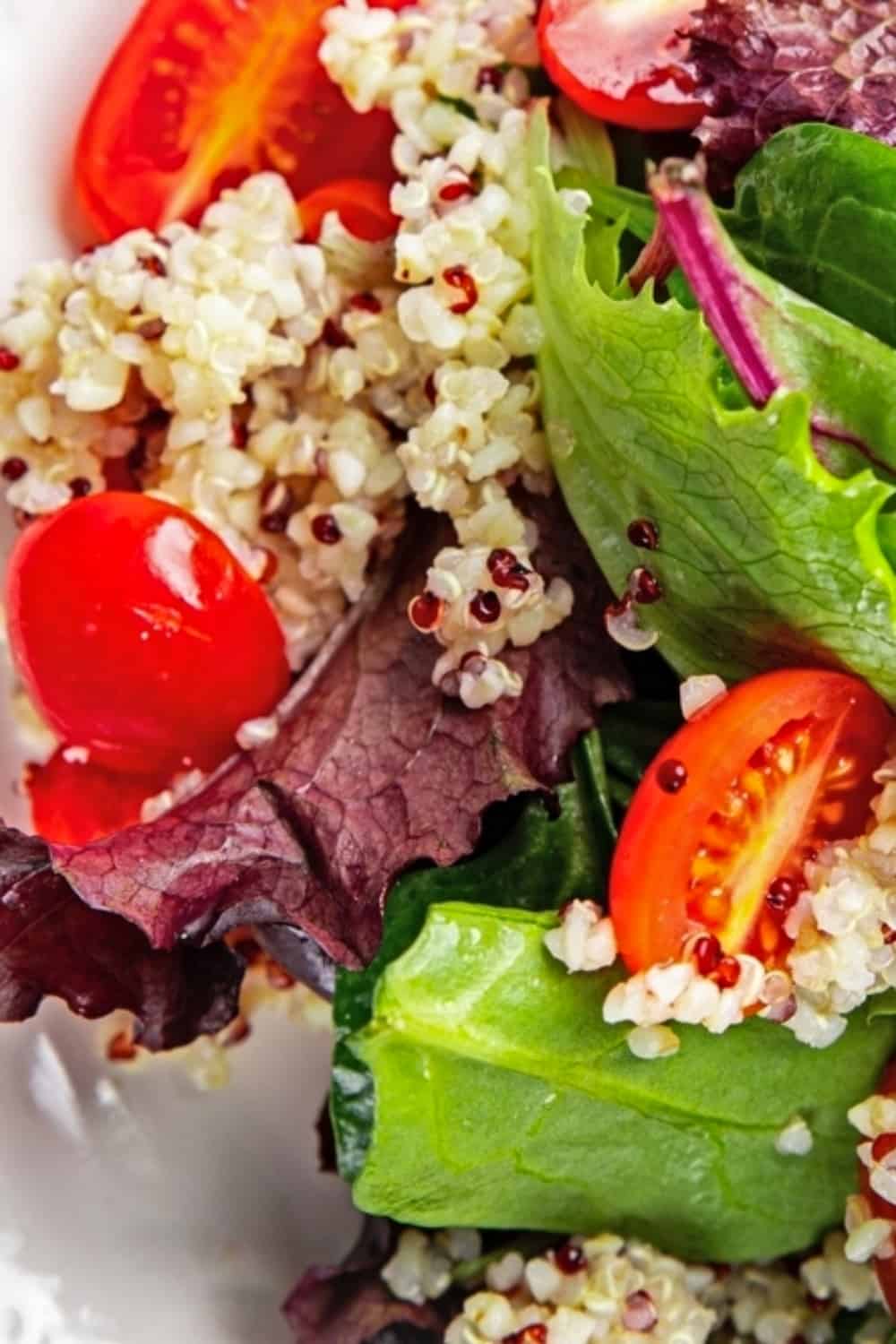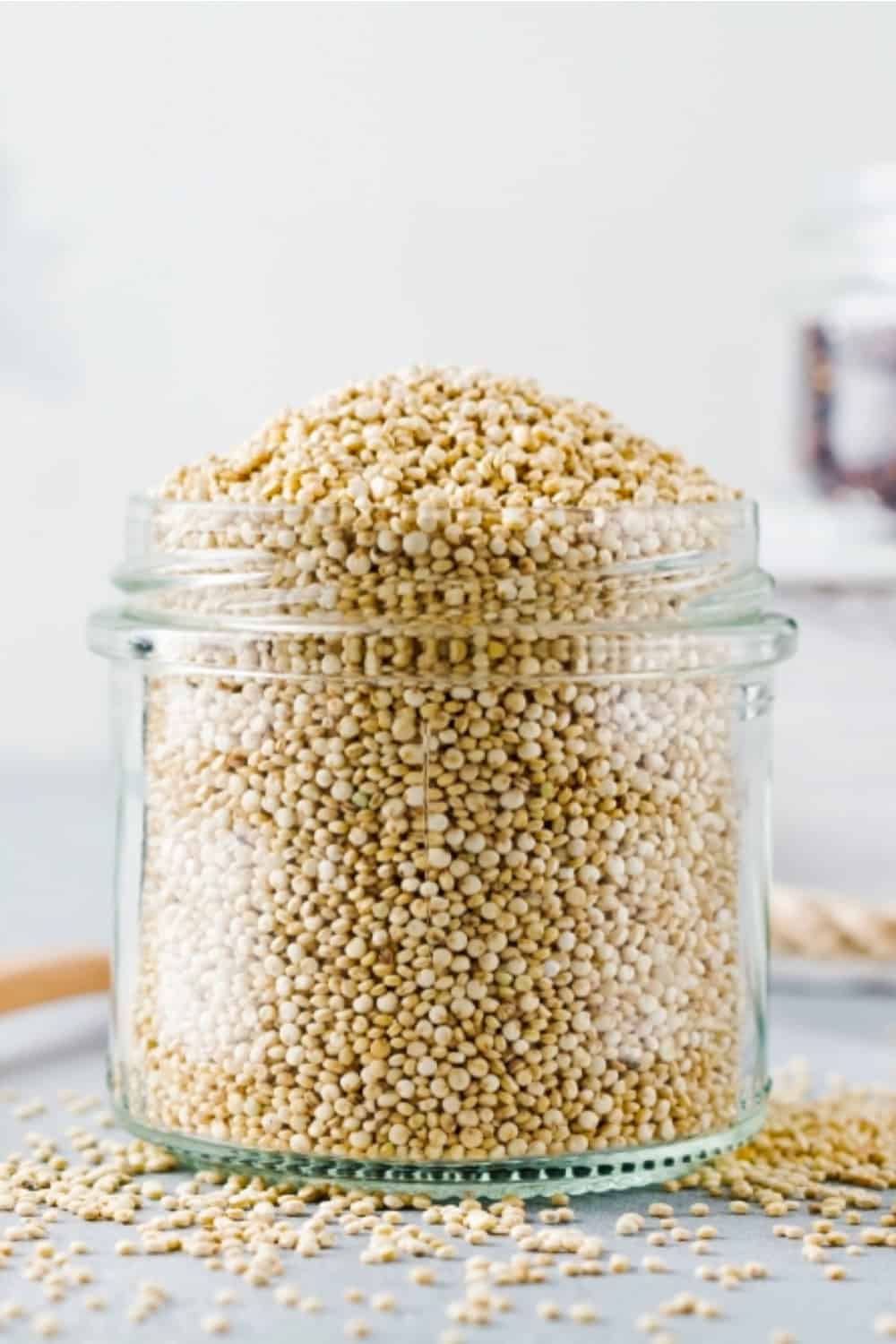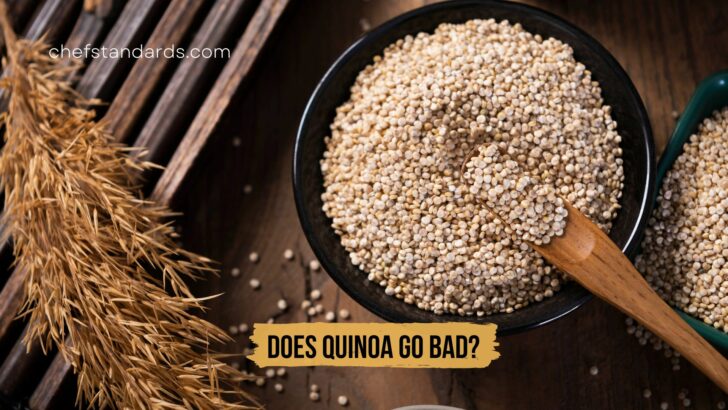So, you’re wondering, “Does quinoa go bad?” The short answer is yes, quinoa can indeed spoil over time, just like any other food product.
However, with the right storage techniques and a keen eye for signs of spoilage, you can maximize its shelf life and enjoy this nutritious superfood in its prime. But how exactly do you do that? And what are the factors that influence quinoa’s longevity?
In this comprehensive guide, you will learn about the factors that affect quinoa’s shelf life, the exact shelf life of different forms of quinoa, how to recognize when it is time to toss it, and the best practices for storing quinoa to keep it fresh for as long as possible.
If you are ready, let’s get to work.
Factors That Affect Quinoa Shelf Life

Now that you know that quinoa can indeed go bad, it is time to understand which factors influence the time in which quinoa will stay good.
Below, you will learn about the main factors that can impact quinoa longevity and how they can affect its quality and safety.
Quinoa Form
Different forms of quinoa have varying shelf lives due to their processing and composition.
Whole quinoa seeds have a longer shelf life than quinoa flakes and flour because they are less exposed to oxygen, which can cause oxidation and spoilage.
Flakes and flour have more surface area exposed to air and has a higher fat and protein content, making them more susceptible to spoilage.
Packaging
The type of packaging used to store quinoa can significantly affect its shelf life.
Airtight containers and resealable bags protect quinoa from exposure to air, moisture, and contaminants, which can cause spoilage.
Proper packaging helps to maintain the freshness and quality of quinoa for longer periods.
Environmental Conditions
As with any other type of food, environmental conditions play a huge role in the shelf life of quinoa. Below, I will go through three environmental factors that are most important.
1. Temperature: Temperature plays a huge role in quinoa’s shelf life. Quinoa likes cool places, i.e. lower temperatures that can prevent the growth of bacteria and mold.
Aside from harmful bacteria growth, exposure to high temperatures or fluctuations can also cause the natural oils in quinoa to go rancid more quickly, affecting its taste and quality.
2. Humidity: The level of humidity is also a crucial factor. Namely, high humidity can cause quinoa to absorb moisture, leading to clumping, mold growth, and spoilage.
On the other hand, a dry environment with low humidity helps to maintain its freshness and prolong its shelf life.
3. Light: The final factor is light, as exposure to direct sunlight can cause quinoa to degrade more quickly, breaking down its natural oils and nutrients.
A dark environment away from direct sunlight helps protect it from the harmful effects of light exposure.
Storage Methods
It is quite logical that the chosen storage method influences the shelf life of quinoa greatly.
In general, quinoa can be stored at room temperature, in the fridge, and in the freezer.
In some forms, quinoa can be stored in all three ways, but other forms of quinoa require only one of two methods. However, more about that below.
Shelf Life Of Different Quinoa Forms

Quinoa can go bad and there are certain factors that influence its shelf life. What can you do about it? Aside from being aware of these factors, it is also important to know the exact shelf life of all forms of quinoa in different storage conditions. So, let’s take a look.
Uncooked Quinoa
Since there are a few different forms of quinoa, I will go through all of them and show you how long they last when uncooked.
• Dry, Whole Seeds: Dry, whole seeds of quinoa can last up to 2-3 years if stored properly in a cool, dark, and dry place, such as in a pantry or cupboard.
• Quinoa Flakes: Quinoa flakes are the form of quinoa made by rolling and flattering whole quinoa seeds. They have a slightly shorter life as they can last for about 1-2 years if stored in a cool, dark, and dry environment.
• Quinoa Flour: Quinoa flour is more perishable than the seeds and flakes because its high protein and fat content makes it more susceptible to spoilage. When stored properly in a cool, dark, and dry place, quinoa flour can last for 6-12 months.
Cooked Quinoa
Cooked quinoa is different when it comes to its shelf life. It has a significantly shorter shelf life than its uncooked counterparts.
Namely, cooked quinoa shouldn’t be left outside for more than 2 hours due to the increased risk of harmful bacteria growth.
When properly stored in the fridge, it can last for up to 5-7 days.
For long-term storage, it is best to freeze it and it will stay good for up to 8-12 months.
Store-Bought Quinoa Products
Store-bought quinoa products, such as quinoa pasta, energy bars, and pre-cooked quinoa pouches, have varying shelf lives depending on the specific product and its ingredients.
To determine the shelf life of these products, check the manufacturer’s expiration or “best by” date printed on the packaging.
As a general rule, it is best store these products in a cool, dark, and dry place, and follow any additional storage instructions provided by the manufacturer to ensure optimal freshness.
Signs That Your Quinoa Might Be Spoiled

Sometimes, you just can’t remember for how long your quinoa has been sitting out there. In such situations, it is very important to know what the potential signs of spoilage are. So, let’s take a look.
• Mold: Mold is almost always a sign of spoiled food, and quinoa is no exception. If you notice any fuzzy, discolored patches on your quinoa, whether uncooked or cooked, it’s time to discard it.
Mold can be green, blue, white, or even black and may have a powdery or slimy appearance, so pay close attention.
• Discoloration: Over time, quinoa may develop a dull or faded appearance, indicating that it’s past its prime. While slight discoloration may not necessarily mean the quinoa is unsafe to eat, it can affect the taste and texture of your dish.
• Bad Smell: Another way to tell if it has gone bad is by its smell. Fresh quinoa should have a slightly nutty aroma, while rancid quinoa will smell sour or unpleasant. If your quinoa has a foul smell, it should be discarded.
• Different Texture: When cooked, quinoa should be fluffy and light. Cooked quinoa that has become excessively soggy, slimy, or sticky is likely spoiled. This change in texture can be due to bacterial or mold growth, which poses a risk to your health.
So if you notice this change in texture, discard it immediately.
Storage Tips For Extending Quinoa Shelf Life
All this information about factors, shelf life, and signs of spoilage will go in vain if you do not store your quinoa the right way. Fortunately, there are some storage tips that can prolong the freshness of your superfood.
Uncooked Quinoa
• Use Airtight Containers: To keep uncooked quinoa fresh and prevent spoilage, it is best to store it in an airtight container. If you don’t have one at hand, glass or plastic containers with tight-fitting lids also work well for this purpose.
Alternatively, you can use resealable plastic bags, ensuring that you remove as much air as possible before sealing.
• Cool, Dark, And Dry Storage Places: Always store uncooked quinoa in a cool, dark, and dry place, such as a pantry or cupboard, away from direct sunlight and heat sources.
Temperature fluctuations and exposure to light can cause quinoa to degrade more quickly, so it’s essential to maintain a consistent storage environment.
Cooked Quinoa
• Refrigeration: If you are dealing with cooked quinoa and don’t want to consume it right away, it is best to refrigerate it. In order to do that, you first need to allow the cooked quinoa to cool for 10-20 minutes.
After that, you can transfer it to an airtight container to keep it from becoming contaminated. Finally, you can put that airtight container into the fridge and leave it there for a suggested period of time.
• Freezing: For long-term storage, freezing is your best bet. Like refrigeration, it is a very simple method. After cooking, you must allow it to cool for 10-20 minutes first.
After that, transfer to a freezer-safe container. If you have a large batch, it is a good idea to divide it into smaller serving sizes. When you do all that, you can label it with the exact date of storage, and then place it in the freezer.
• Reheating: When you’re ready to enjoy your stored cooked quinoa, reheat it in the microwave or on the stovetop. For the best results, add a splash of water or broth to the quinoa before reheating to help retain its moisture and prevent it from drying out.
Tips For Store-Bought Quinoa Products
• Follow the manufacturer’s instructions: For store-bought quinoa products like quinoa pasta, energy bars, and pre-cooked quinoa pouches, always follow the manufacturer’s storage instructions and expiration dates printed on the packaging.
These guidelines are specifically designed to help maintain the product’s freshness and quality.
• Proper storage environment: As a general rule, one should store store-bought quinoa products in a cool, dark, and dry place, away from direct sunlight and heat sources.
Some products, like quinoa flour or certain energy bars, may benefit from refrigeration or freezing for extended storage. Always check the packaging for specific storage recommendations.
Can You Eat Quinoa Past Its Expiration Date?

Quinoa can go bad or expire, so many people are confused by the meaning of the expiration date on the label of the quinoa product. Let’s be real. People are confused by the meaning of the expiration date of pancake mix, or any other box-dated foods out there.
You have to know that the expiration date is actually a “best by” date, i.e. a guideline provided by the manufacturer to indicate when the product is at its peak quality, but it is not necessarily a strict deadline for when the quinoa is no longer safe to eat.
However, that doesn’t mean that you shouldn’t be careful. Quinoa is not so sensitive like some other types of food, like for example chicken, but you have to be careful after all.
While uncooked whole quinoa seeds are usually safe to eat past the expiration date if stored properly, quinoa flakes, flour, or store-bought products may be more susceptible to spoilage and should be assessed carefully before consuming past the expiration date.
It is therefore always best to examine the quinoa for signs of spoilage, such as mold, off smells, or changes in texture, especially if you are consuming it past the expiration date.


